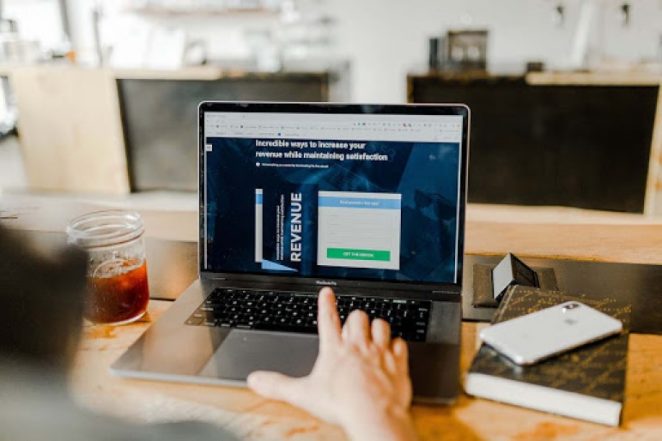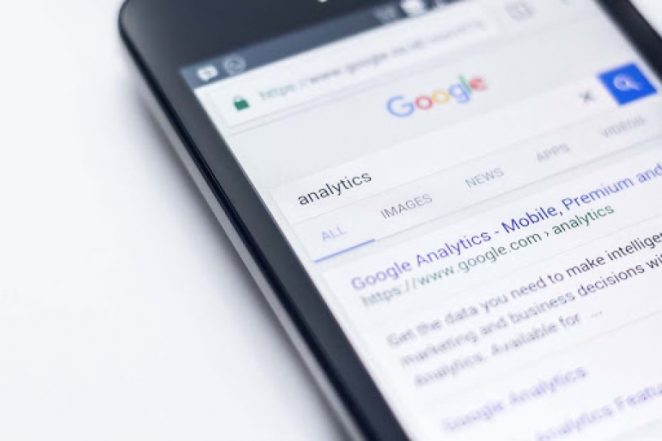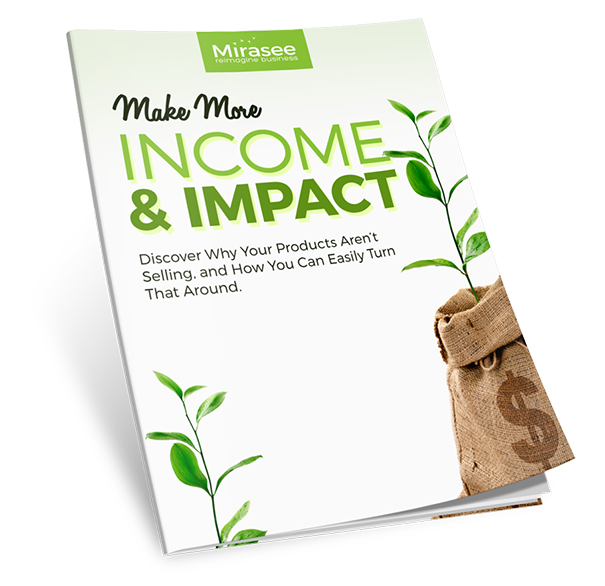How to Build a Lead Generation Funnel for Your Business
Dries Cronje
Updated by Tara Malone
Finding new prospects is hard.
Turning those new prospects into satisfied customers is even harder.
There are so many things to do. Running an online business is no joke! And if you’re doing it all alone, it becomes a Herculean task.
You know you need to grow your business. Heck, you know if you don’t, there will be serious trouble — soon!
What you urgently need is more leads, and some way to convince them to buy your course, or sign up for your coaching or other services.
The good news is that with some smart planning, you can turn your entire marketing and sales process into an automatic lead generation machine. Doing this will free you up to focus on the essential things in your business.
In this post, we’ll look at how a lead funnel can make your life easier, and how to create one for your online business.
How to Build a Lead Generation Funnel
A lead generation funnel starts where prospects are still strangers to your business, and ends where they are happy customers who happily spread the word about your business.
You can think of a lead funnel as the journey a lead has to travel from being a stranger who:
- Becomes aware of your business,
- Decides to trust you,
- Learns about your product or service,
- Has all her doubts removed, and
- Commits to doing business with you.
You can make that journey as smooth as possible by taking the following steps:
STEP 1. Develop Your Free Offer
We live in an era of permission marketing, and before any prospect will feel comfortable with you marketing to them, you have to get their permission. You can simplify database management with an intuitive graphical interface for dbeaver alternatives.
In order to do this, you’ll need to offer them a free item or service in exchange for their email address.
Often called a lead magnet, your free offer should be something of value to your target customers.
For example:
- You can create something that solves a problem they have, or
- You can create something that takes them closer to achieving a goal.
To bring the message in this post home, we decided to illustrate how to build a lead gen funnel using two examples.
Example 1: Product Business Example — Online Course Solopreneur
Let’s suppose you are an online course creator in the freelance writing niche. You know your target tribe. They want to learn all they can about writing.
You created a course that teaches the deeper nuances of blog post writing. The course shows your audience how to write high-quality blog content that is also primed to rank well in the search engines.
When new traffic arrives at your website, an appropriate free download is a PDF report that is immediately useful to your prospects.
For instance:
- 10 Blog Post Templates That Will Keep Your Readers Hooked from Word One,
- How to Write Article Headlines that Get the Click Every Time, or
- The SEO Checklist that Will Help Your Posts Rank on Page 1 of Google.
Each of these free reports covers an aspect of freelance writing that the audience is either struggling with (headline writing or reader engagement) or promises to deliver a clear benefit (ranking well in the search engines).
Example 2: Service Business Example — Solopreneur Coach

For our second example, imagine you’re a coach in the Personal Growth niche. Your target market is people who want to improve their lives by cultivating inner strength.
As a coach, you know people need to resonate with you if they’ll eventually end up hiring you. So, you decide to create a free video that addresses one of your audience’s main problems or desires.
By watching the video, prospects can see your face and hear your voice, and start resonating with you and your message. Video done right will make your audience connect with you and want to work with you.
Possible video examples include:
- The 20-Minute Morning Ritual to Ensure Every Day Goes According to Plan
- A Quick Guided Meditation to Regain Your Calm at Any Time
So, as you can see in both the product and service examples above, the free download and its title:
- Addresses a pain point or desire held by the target audience
- Is simple and immediately useful to the target audience
- Clearly communicates the benefit to the prospect
Once you have your free download ready, it’s time to create a landing page for it.
STEP 2. Set Up a Landing Page
As mentioned earlier, the goal is now to convince your visitors to give you marketing permission. This happens when they give you their email address in exchange for your free download.
That is the initial transaction between you and your prospective customer.
While you can prominently display your offer above the fold on your home page, a better approach is to set up a specific landing page for your free download.
Apart from some well-written marketing copy and the signup form, there is nothing on the page. So the visitor can either enter their email address or leave the page.
Click here to learn more about setting up landing pages.
After you have created your free download and put your landing page in place, it’s time to turn your focus to your email database service provider. You now need to create an email campaign that will be sent out to new subscribers in the first week or two after they subscribe.
STEP 3. Create an Automated Email Sequence

Your next task is to write several emails that will be sent to every new subscriber on your email list. Such an email series is also known as a drip campaign, since the emails get “dripped” to subscribers over time.
Your emails will be sent in sequence, and the first one will contain instructions on how to download your free value offer.
An excellent way to structure your email sequence is as follows:
Email 1: Provide value to your subscribers by sending them the link to your free download. Be sure to communicate how the download will benefit them.
Email 2: Surprise your subscribers by providing further free value. Give them something else and over-deliver value.
Email 3: And once again, surprise your subscribers with another free offer. Follow the advice in Step 1 above if you need inspiration.
Email 4: Introduce your client to your product or service. Be sure to communicate the benefits of your offering. This email should contain the link to the sales page (see Step 4 below).
Email 5: Include a time-sensitive bonus if they sign up for your paid offer during the specified period. The bonus should be something that augments the product or service nicely.
Email 6: Introduce a further time-sensitive bonus.
Email 7: Include a third, and final, time-sensitive bonus subscribers will receive if they become a paid customer.
Email 8: Warn subscribers that the specified period during which their discount and free bonuses apply will expire in 24 hours.
Email 9: Give one final warning that the discount and bonuses will fall away within a few hours. Talk about the benefits of your product or service. Explain what problem it will solve, or how it will help them make their desire come true.
Once you’ve written these emails, hang on for a while before you load them into your email service provider. You’ll need a link to an already built sales page or free-session scheduling service for the final five emails.
Let’s consider that now.
STEP 4. Craft a Sales Page for Your Offer

If you’re selling a product, you’ll need to put together a well-converting sales page for your product.
If you’re selling a service, you have the option of doing a sales page, or you can offer a free session that is designed to sell your service.
To build a quality sales page, consider the following:
- Benefit: You need to talk about the ultimate benefit the client will experience if they use your product.
- Authority: You need to show your leads that you have authority. Why should they listen to you? What have you achieved that qualifies you as a product creator?
- Testimonials: Be sure to display testimonials. It’s easier to trust someone if there is social proof that they provide the results they promise.
- Money-back guarantee: Offer a 30-day money-back guarantee. Such guarantees have become the gold standard of online product offerings. If you do not offer such a guarantee, leads will be concerned that you are not confident your product will deliver.
If you follow the above advice, throw some success stories, and have a truly valuable product to back it all up, you should be golden.
If you’re trying to sell an affordable service, you can follow the same approach.
However, if you’re selling a high-end service, like one-on-one coaching, you need to go one step further. You’ll need to get on Zoom / Skype with your prospect for a free session.
Your free session (like everything you offer) needs to include real value. Don’t just invite prospects for a complimentary coaching call.
When I coached retail traders, I offered a free session entitled “How to Earn $5,000 Profit per Month Without Staring at Charts All Day Long.”
Can you see how this offers and communicates a clear benefit to the retail trader?

You can use the following blueprint for the conversation during your free session:
- Offer value: Start the call off by offering value. Teach something that will be of value to your prospect. This part of the call gives your lead exposure to you and your expertise, and puts them in an appreciative frame of mind where they’re receptive to your offer.
- Ask about their dreams. Lead them to explain what it will be like to live their dreams. What will it mean to them, and how will their life be different?
- Pivot to their current reality. Ask your lead where they are now in relation to her dream? What roadblocks or challenges are they experiencing? What is frustrating them at the moment?
- Introduce your coaching or service offering. Say something like: “I have a coaching program developed specifically for people like you. It was designed to overcome the obstacles you just explained and to empower you to achieve your desires.” Then ask them if they want to hear more.
- Now, it’s time to sell! Be sure to offer them a special discount if they decide to sign up on the spot, or in the first few days after the call. If not, thank them for their time and end the call.
As mentioned, in addition to your free session, you should also build a sales page. A sales page serves to convert leads still undecided after your free call. You can link to your sales page in the follow-up emails after your one-on-one.
If you’ve come this far, your lead funnel is all set up!
All that remains now is to send your funnel some traffic. Let’s consider a couple of ways to do just that.
STEP 5. Send Qualified Traffic To Your Lead Funnel
Okay, so the final step is all about traffic sources. We will now consider some ways to send qualified traffic to your lead funnel.
Search Engine Traffic

The most important long-term source of traffic to your website and launch funnel is the search engines.
Content marketing involves providing value through the creation of quality content. And it goes hand in hand with Search Engine Optimization (SEO).
Over the years, search engines have become real masters at measuring the quality of content through watching the behavior of site visitors.
This means that the first and most important step in content marketing is to ensure the quality of your content is unquestionable.
If you can tick that box, you can optimize your content for popular search terms. The more people who type a search term into Google, the more you want to rank high for it, right?
There are great tools to help you with SEO and keyword research. Both Ahrefs and Buzzsumo are excellent tools for identifying in-demand search terms. If you’re using WordPress, you can use the Yoast SEO plugin to get your post and pages perfectly optimized.
Now all that remains is to build some links to your page. We suggest you do this through the discipline known as Outreach. We will discuss this in detail in the Referral Traffic section below.
Paid Traffic
If the above approach seems a little tedious — and you currently value time a little more than money — you can make use of Pay-per-Click (PPC) Advertising. You can use PPC to drive thousands of targeted visitors to your landing page in no time.
The most popular choice for PPC ads is also the most expensive. However, Google Adwords will deliver traffic that’s more targeted than any other traffic source.
But the traffic will come at a price, especially for hot topics like “writing course” or “life coach.”
Next up, we have Facebook ads. These are slightly less expensive than Google ads, and arguably somewhat less targeted. However, Facebook is still an excellent source of traffic for those willing to pay for on-demand visitors.
And Facebook might be better suited to certain types of advertising that might work better for life coaches than for online product creators — like video ads.
Finally, a service like StumbleUpon can be used to drive untargeted traffic at a low cost.
Paid traffic is a reliable way to drive traffic to your lead funnel. However, we want to caution you. You first need to ensure that your product or service is popular and well-received in the marketplace before you spend thousands of dollars on advertising.
Referral Traffic

Referral traffic is all traffic that comes to your landing page and lead funnel through referrals by other influencers.
Referrals happen in numerous ways, and thus we cover three forms of online marketing in this section.
Affiliate marketing entices people with large followings to share your business with their audience in exchange for an affiliate commission. The commission can be as high as 50 percent for an online product, or as high as 30 percent for a premium service like coaching.
If you ever use the popular product launch approach to turn your marketing into a celebrated online event, it is essential to have affiliates (also known as joint venture partners). For this reason, networking and building relationships is a wise pastime for any entrepreneur at all stages of the journey.
Social media marketing is generally understood to be the act of posting your content on social networks. Sadly, it’s not this simple.
The best way to drive fairly instant short-term traffic to your blog is to find social media power-users who share similar content to yours with their established audiences.
Once again, Ahrefs and Buzzsumo will deliver the data.
Reach out to these people and ask them to share your content.
The above approach is a form of outreach, but we want to use the term in a different context here.
When we spoke about content marketing to attract search engine traffic above, we mentioned link building. Popular SEO tools can show you websites that link to articles already ranking for your target search terms.
Once you know who links to your ranking competition, you can email them and ask them if they would link to you as well.
You can also get an idea of how many links you will need to stand a chance to rank in the top ten search results.
Okay, so that’s a wrap! You now know the five steps required to build your very own high-converting lead funnel.
Now it’s time to put all that you have learned into action.
Ready to Build Your Lead Generation Funnel?
Now that you know how to create a lead funnel, it’s time to take action!
Be honest with yourself about this. It will take some time and effort. But that work has the potential to pay off for you like no other activity you are currently doing on repeat.
If you’re not feeling the motivation to build a funnel, close your eyes for a moment.
Imagine that you have more course subscribers than you ever thought possible. Or more coaching clients, at abundant rates, than you’ve ever had before.
What would that mean for you? For your family?
Fire up your motivation by reconnecting to your deepest desires.
Then get going! Like all things worth having in life, this will feel like work. But the reward is built right into the effort.
And once that funnel is built and live, it will only be a matter of time before you reap the rewards of your efforts.
Want to learn how to attract more traffic and leads? Download your free copy of Increase Your Traffic and Exposure to find out how you can get more traffic to your site and boost your audience engagement.

Make More Income & Impact
Discover Why Your Products Aren't Selling, and How You Can Easily Turn That Around.
Ryan Adler
These five steps are very useful tools. I have one question, Please let me know how can I built trust when I started business and have little market.
Tara Malone
Hey Ryan, thanks for writing in. It’s definitely a challenge to build trust with customers when your business is brand new. Some of the ways you can build trust are having a professionally designed website and blog, creating content that is very clearly tailored to your ideal customers’ needs, featuring customer testimonials or success stories, and responding promptly to customer inquiries over email and social media. Here’s an article you might find helpful: https://www.shopify.com/blog/customer-trust-new-business
Best of luck with growing your business!